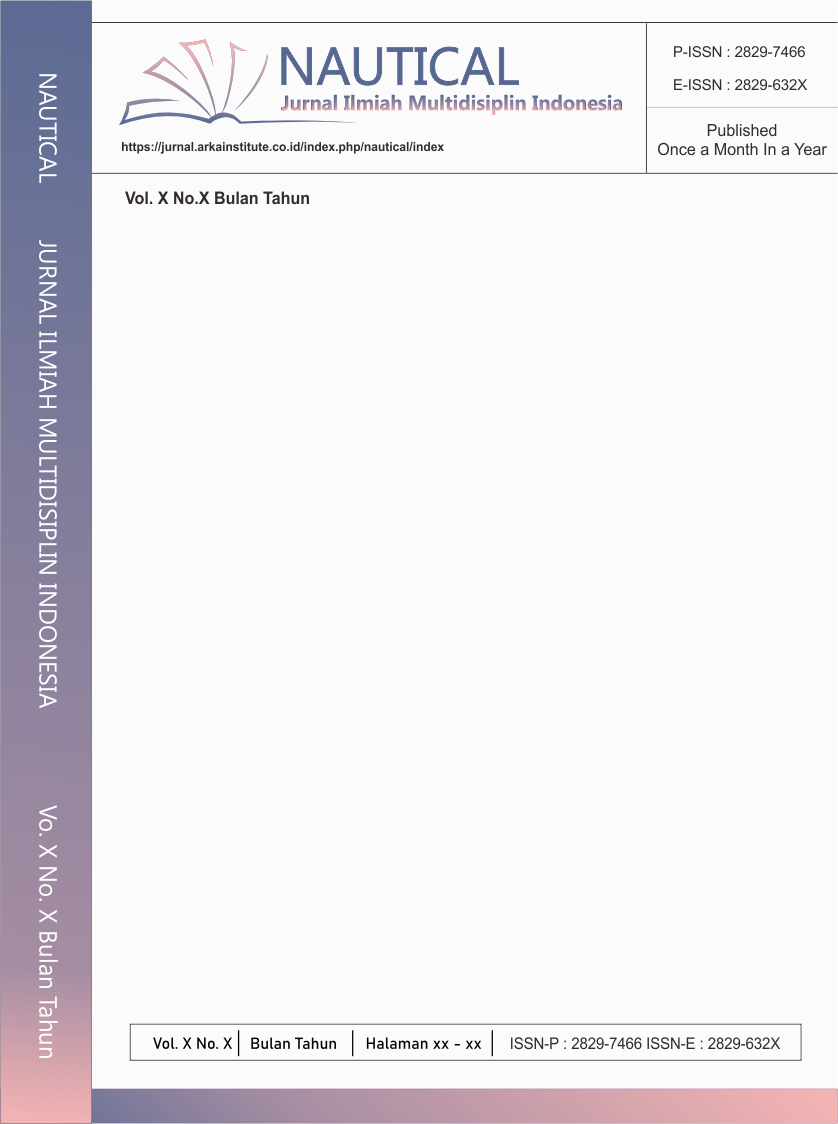Ketimpangan Akses Layanan Rehabilitasi Medik di Negara Berkembang: Kajian Literatur
Main Article Content
Abstract
Ketimpangan akses terhadap layanan rehabilitasi medik di negara-negara berkembang merupakan tantangan serius dalam sistem kesehatan global. Rehabilitasi berperan penting dalam meningkatkan fungsi dan kualitas hidup individu dengan disabilitas atau pasca-penyakit kronis. Penelitian ini bertujuan untuk mengkaji kesenjangan akses layanan rehabilitasi medik di negara-negara berpenghasilan rendah dan menengah melalui kajian literatur internasional. Metode yang digunakan adalah scoping review terhadap 20 artikel yang bersumber dari PubMed, Scopus, Web of Science, Google Scholar, dan CINAHL. Hasil kajian menunjukkan bahwa keterbatasan infrastruktur, minimnya tenaga kesehatan, ketimpangan sosio-ekonomi, serta lemahnya kebijakan publik menjadi hambatan utama akses layanan. Solusi potensial yang diidentifikasi meliputi telerehabilitasi, model rehabilitasi berbasis komunitas, serta integrasi layanan ke dalam sistem kesehatan primer. Namun, efektivitas solusi sangat dipengaruhi oleh kesiapan sistem, dukungan regulasi, dan konteks lokal. Kajian ini merekomendasikan pendekatan multisektoral dan berbasis bukti untuk mewujudkan layanan rehabilitasi yang inklusif, berkelanjutan, dan merata di negara berkembang.
Article Details
Section

This work is licensed under a Creative Commons Attribution-NonCommercial 4.0 International License.
How to Cite
References
Bright, T., Wallace, S., & Kuper, H. (2018). A systematic review of access to rehabilitation for people with disabilities in low-and middle-income countries. International Journal of Environmental Research and Public Health, 15(10), 2165. https://doi.org/10.3390/ijerph15102165
Chiu, Y.-L., Kao, S., Tou, S.-W., & Lin, F.-G. (2018). Effects of heterogeneous risk factors on psychological distress in adolescents with autism and victimization experiences in Taiwan. Disability and Rehabilitation, 40(1), 42–51. https://www.tandfonline.com/doi/abs/10.1080/09638288.2016.1242173
Cieza, A., Causey, K., Kamenov, K., Hanson, S. W., Chatterji, S., & Vos, T. (2020). Global estimates of the need for rehabilitation based on the Global Burden of Disease study 2019: a systematic analysis for the Global Burden of Disease Study 2019. The Lancet, 396(10267), 2006–2017. https://www.thelancet.com/journals/lncet/article/PIIS0140-6736(20)32340-0/fulltext
Clemente-Suárez, V. J., Ramírez-Goerke, M. I., Redondo-Flórez, L., Beltrán-Velasco, A. I., Martín-Rodríguez, A., Ramos-Campo, D. J., Navarro-Jiménez, E., Yáñez-Sepúlveda, R., & Tornero-Aguilera, J. F. (2023). The impact of anorexia nervosa and the basis for non-pharmacological interventions. Nutrients, 15(11), 2594. https://doi.org/10.3390/nu15112594
Dumako, A. R., & Trisista, R. G. M. (2024). Government Policy in Ensuring Accessibility and Legal Protection of Health Rights for Persons with Disabilities. Reformasi Hukum, 28(2), 142–152. https://doi.org/10.46257/jrh.v28i2.1070
Gandhi, D. B. C., Kamalakannan, S., Dsouza, J. V, Montanaro, V., Chawla, N. S., Mahmood, A., Ngeh, E., Zarreen, S., Vijayanand, P. J., & Solomon, J. M. (2025). Research, education and practice of tele-neurorehabilitation in low and middle-income countries: A Scoping Review. NeuroRehabilitation, 56(1), 48–60. https://doi.org/10.3233/NRE-240053
Habibi, D. (2020). Rekonstruksi Sistem Hukum Kesehatan Di Indonesia Dengan Pendekatan Perbandingan Sistem Kesehatan Di Negara Maju. Jurnal Medika Hutama, 1(03 April), 156–162. https://jurnalmedikahutama.com/index.php/JMH/article/view/34
Hornung, A., Steeb, T., Wessely, A., Brinker, T. J., Breakell, T., Erdmann, M., Berking, C., & Heppt, M. V. (2021). The value of total body photography for the early detection of melanoma: a systematic review. International Journal of Environmental Research and Public Health, 18(4), 1726. https://doi.org/10.3390/ijerph18041726
Ibhar, M., & Fadzilah, M. (2023). Stunting Care Edu: Meningkatkan Kesadaran Dan Pengetahuan Masyarakat Melalui Kerjasama Lintas Sektor Di Kampung Kb Kelurahan Laksamana. Jurnal Pengabdian Masyarakat STIA LK (PESAT), 2(2), 105–109. https://ejournal.stia-lk-dumai.ac.id/index.php/pesat/article/view/123
Jati, H. A., & Suharyani, S. T. (2024). Perancangan Pusat Rehabilitasi Narkotika Di Yogyakarta Dengan Pendekatan Kontekstual. Universitas Muhammadiyah Surakarta. https://eprints.ums.ac.id/id/eprint/126903
Jesus, T. S., Landry, M. D., Dussault, G., & Fronteira, I. (2017). Human resources for health (and rehabilitation): Six Rehab-Workforce Challenges for the century. Human Resources for Health, 15(1), 8. https://link.springer.com/article/10.1186/s12960-017-0182-7
Kamenov, K., Mills, J.-A., Chatterji, S., & Cieza, A. (2019). Needs and unmet needs for rehabilitation services: a scoping review. Disability and Rehabilitation, 41(10), 1227–1237. https://doi.org/10.1080/09638288.2017.1422036
Mohamad, I. S., & Defi, I. R. (2022). Telerehabilitation in low-and middle-income countries. In Telehealth and telemedicine-the far-reaching medicine for everyone and everywhere. IntechOpen. https://www.intechopen.com/chapters/84708
Munawaroh, S., Pamungkasari, E. P., Randita, A. B. T., Budiastuti, V. I., Hastami, Y., Maftuhah, A., Hermasari, B. K., Nugroho, D., Dharmayoga, A. U., & Aji, M. B. S. (2024). Meningkatkan Perawatan Pasien Melalui Kolaborasi Antar Profesi: Wawasan dari Program Pelatihan di Layanan Kesehatan Primer. Abdimas Universal, 6(2), 420–426. https://doi.org/10.36277/abdimasuniversal.v6i2.515
Nizeyimana, E., Joseph, C., & Louw, Q. A. (2023). Organizational readiness and rehabilitation professionals’ views on integrating telerehabilitation into service delivery and students’ clinical training: A qualitative study. Digital Health, 9, 20552076231212310. https://doi.org/10.1177/20552076231212314
Olivia, S., Fitri, S. N., Ikhlas, Z., Rafi, R., Jumiati, J., & Saputra, B. (2025). Menavigasi Kompleksitas Reformasi Administrasi Negara: Tinjauan Literatur Sistematis terhadap Tantangan Implementasi dan Peluang Strategis di Negara Berkembang. Jurnal Intelek Insan Cendikia, 2(6), 10931–10938. https://jicnusantara.com/index.php/jiic/article/view/3692
Pasenda, M. J. P., Fauzan, N. I., Aina, Q., Barokah, V., Bahrudin, M., & Fajri, D. N. (2025). Gambaran Kualitas Hidup Pasien Pasca Stroke yang Mendapatkan Terapi Rehabilitasi Medik. CoMPHI Journal: Community Medicine and Public Health of Indonesia Journal, 5(3), 215–226. https://comphi.sinergis.org/comphi/article/view/197
Sianipar, G. S. N., Qur’ainny, A., Julian, D. M., & Saefulrahman, I. (2025). Keterbatasan Peran Pemerintah Daerah Kabupaten Sumedang dalam Menangani NAPZA melalui Rehabilitasi. Jurnal Kolaboratif Sains, 8(1), 342–360. https://doi.org/10.56338/jks.v8i1.6723
Stucki, G., Bickenbach, J., Gutenbrunner, C., & Melvin, J. L. (2018). Rehabilitation: The health strategy of the 21st century. https://doi.org/10.2340/16501977-2200.
WHO. (2023). World rehabilitation need estimates. World Health Organization. https://www.who.int/news-room/fact-sheets/detail/rehabilitation

